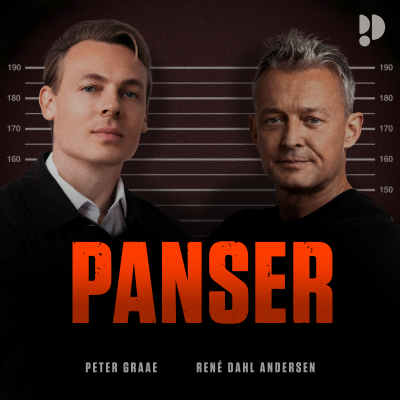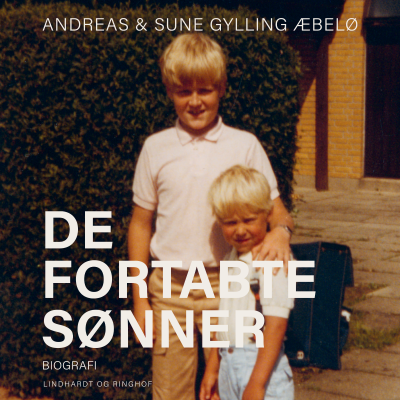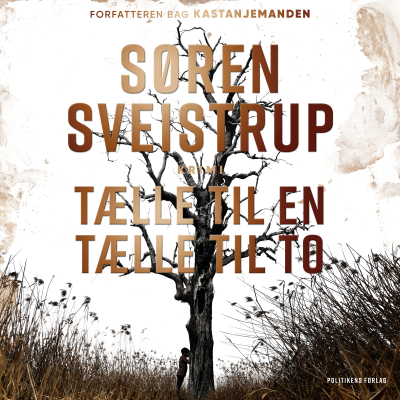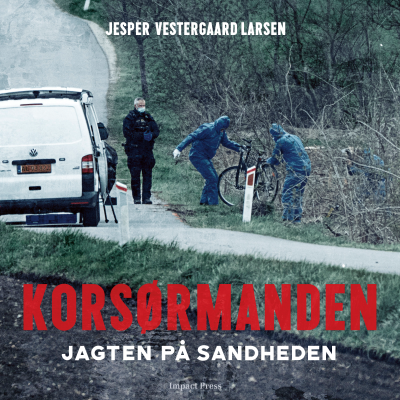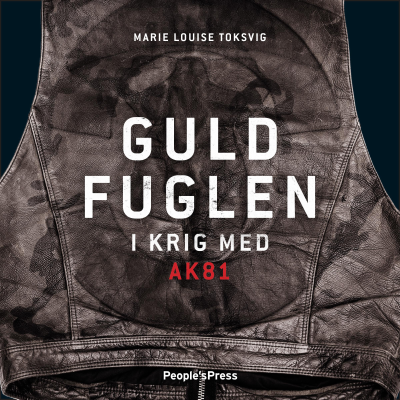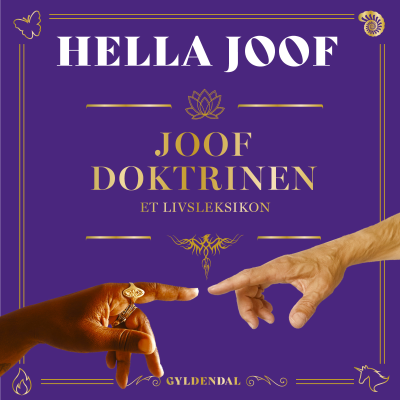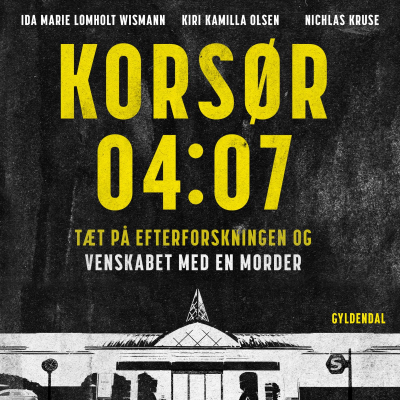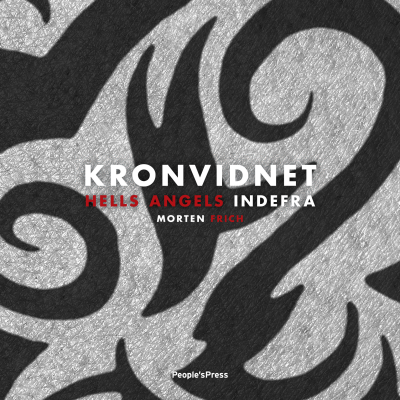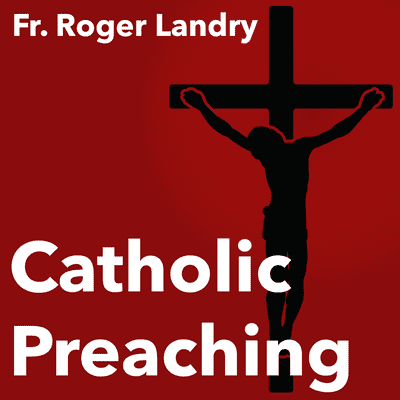
Listen to Catholic Preaching
Podcast by Father Roger Landry
Father Roger J. Landry is a priest of the Diocese of Fall River, Massachusetts, who works for the Holy See’s Permanent Observer Mission to the United Nations in New York.
Start 60 days free trial
99,00 kr. / month after trial.Cancel anytime.
All episodes
1686 episodesMsgr. Roger J. Landry Meditations for the Seven Last Words of Jesus Saint Patrick’s Cathedral, New York City Good Friday 2025 April 18, 2025 To watch a video of this word, please click below: To listen to an audio recording of the homily based on this word, please click below: https://traffic.libsyn.com/secure/catholicpreaching/4.18.25_Conclusion_of_the_Seven_Last_Words_1.mp3 [https://traffic.libsyn.com/secure/catholicpreaching/4.18.25_Conclusion_of_the_Seven_Last_Words_1.mp3] The following text guided the homily: * After Jesus shouted his last word of entrustment to the Father, the Cross fell silent. * Jesus’ body continued to speak and give, as his side and heart were pierced with a soldier’s lance and out flowed blood and water, a sign of baptism and the Eucharist, the font of sacramental life in the Church. * Nature created by Jesus also began to speak. The earth quaked, rocks were split and tombs were opened. * The house of God began to speak as the curtain in the holy of holies in the temple was torn from top to bottom. * Spectators began to speak, like a centurion, who observing Jesus’ words and actions and the revulsions taking place in nature, cried out, “Truly this was the Son of God.” * Silent were the words of the apostles. The Shepherd was struck and the sheep were scattered. They soon eventually reconvened fearfully in the Upper Room behind locked doors, using it as a hideaway rather than as a place to do what Jesus the previous night had told them to do in his memory and rather than as a launch pad for mission. * Mary, however, continued to stand by the Cross of her Son confident in hope of how this was not the end, but the prelude to the greatest revolution of all time, about to erupt 40 hours later. With help from others, like Joseph of Arimathea, who had gone to Pilate to ask for Jesus’ body, Mary would be present as Jesus bloody, scourged, thorn-crowned and crucified body was taken down from the Cross and placed in her arms. She had so many times when he was an infant held him in her arms as he slept. Now she held him anew, asleep once more in expectation of the fulfillment of his promises. * Here in St. Patrick’s, behind the sanctuary, there is a resplendent marble pietà, not as famous as that done by a 25-year-old Michelangelo, but a masterpiece nonetheless. Sculpted in 1906 by William Ordray Partridge, Jesus is not horizontal across Mary’s lap, but place vertically between her legs with his own limp legs bent as a pair on the ground, his back leaning against her right leg, and his left arm resting on her left thigh. Mary holds in her left hand her Son’s glorious scarred left hand and with her right hand she lovingly takes her Son’s head and tilts it back so that she can she can his face as she caresses with maternal love his beard. It is an expression of reverence and awe for what Jesus has done. Mary shows her love for his sacred body not just as a mother but as a Christian, a preparation for the way we are meant to treat him whenever we receive him in Holy Communion, as Jesus, risen from the dead, entrusts himself to each of us. With similar love she would supervise as Joseph and Nicodemus and the women prepared Jesus’ body for burial. As Mary put the loving final touches on the linen shroud wrapping Jesus’ body and burial clothes wrapping his dead, she doubtless was preparing inwardly for what would occur on the third day. * What happened to the Cross? After Jesus’ body was taken down, it was forsaken by the Christians as the awful instrument that brought about his death. It was eventually thrown into a cavern underneath the limestone skull-shaped hill, enclosed in a pagan temple by the emperor Hadrian and finally rediscovered by St. Helen after the legalization of Christianity. It began an instrument of miracles. It became a means of faith. It became a reminder of the great victory of Christ. And now is enshrined in the Church built over St. Helen’s old house — Rome’s Basilica of the Holy Cross in Jerusalem — and shared in various reliquaries across the globe. That Cross remains an eloquent sign and means of hope because of what Christ accomplished on it. It’s a message of hope that never expires. * One of the classic hymns sung for centuries on this day is the Pange Lingua Gloriosi Proelum Certaminis,” “Sing my tongue the Glorious Battle.” The eighth of ten verses contain the hymns most famous words. They’re words of praise for the Cross on which hung the Savior of the World, the Cross that symbolically each of us will have the chance to venerate at the Passion Service that will begin at 330. “Crux fidelis,” we sing, “inter omnes arbor una nobilis.” In John Neale’s beautiful translation, we pray, “Faithful cross, true sign of triumph, Be for all the noblest tree; None in foliage, none in blossom, None in fruit thine equal be; Symbol of the world’s redemption, For the weight that hung on thee!” The Cross is indeed the noblest tree of all time, an instrument of death, which became the tree of life, an instrument of torture that became mankind’s greatest source of blessing. Cicero had called crucifixion, “a nefarious action such as that is incapable of description by any word, for there is none fit to describe it.” But Christ turned that nefarious action incapable of description into a saving, grace-filled deep that, while still ineffable, has inspired poets, and hymn writers and mystics ever since. * Beholding the Cross anew, now bereft of its most sacred fruit of the Body and Blood of the Lord Jesus, we ask for the grace to follow Jesus by putting our own body there, taking up our Cross every day. To hail the Cross as indeed our only hope and to be ready always and everywhere, but especially today, to give an explanation of the reason of our hope to anyone and every who asks. This Christian hope was validated at dawn on the third day when the seemingly impossible happened and the Crucified Carpenter, as the Word of God who has spoken these seven words to us, rose from the dead, as the Resurrection and the Life burst from the tomb, as the Light of the World irradiated the darkness that had covered the planet on Good Friday and had remained unabated until dawn on the first day of the week. That resurrection shows that Christian hope is not wishful thinking, is not in vain, does not disappoint, but is a confidence, a trust, that all God has promised will indeed come true, that right now God is with us, and wants to fulfill his work in us and bring us to fulfillment of our great hope of which Jesus’ resurrection is the foretaste, and in the meantime make us his instruments to complete his saving work in the world. * What is that work? As we’re about to sing. It’s to lift high this Cross, proclaiming the love of God it displays, until all the world proclaims the Savior’s name! Ave O Crux spes unica! Amen! [https://i0.wp.com/catholicpreaching.com/wp/wp-content/uploads/2025/04/kTLy7.png?resize=200%2C300&ssl=1]https://i0.wp.com/catholicpreaching.com/wp/wp-content/uploads/2025/04/kTLy7.png?ssl=1 The post Concluding Reflection on Ave, O Crux, Spes Unica: The Jubilee of Hope and Jesus’ Seven Last Words from the Cross, St. Patrick’s Cathedral, New York, April 18, 2025 [https://catholicpreaching.com/wp/concluding-reflection-on-ave-o-crux-spes-unica-the-jubilee-of-hope-and-jesus-seven-last-words-from-the-cross-st-patricks-cathedral-new-york-april-18-2025/] appeared first on Catholic Preaching [https://catholicpreaching.com/wp].
Msgr. Roger J. Landry Meditations for the Seven Last Words of Jesus Saint Patrick’s Cathedral, New York City Good Friday 2025 April 18, 2025 To watch a video of this word, please click below: To listen to an audio recording of the homily based on this word, please click below: https://traffic.libsyn.com/secure/catholicpreaching/4.18.25_Seventh_Word_from_the_Cross_1.mp3 [https://traffic.libsyn.com/secure/catholicpreaching/4.18.25_Seventh_Word_from_the_Cross_1.mp3] The following text guided the homily: * Jesus’ very last words, as he was preparing to die within seconds, were of tremendous trust and confidence in His Father. To give out a loud cry would have been incredibly painful and jarring, but he did it anyway. He would finish by channeling everything he had in one more act and sign of love to the Father. “Father,” he shouted with love, “Into your hands, I commend my Spirit,” and St. Luke tells us, immediately after saying that, he breathed his last. * “His garments,” Archbishop Sheen said, “are consigned to his executioners, his blood to the earth, his body to the grave, his mother to John and [now] His soul to His heavenly Father.” He indeed entrusted all he had left, all he was and had, to his Father in heaven. It was the exclamation point of a life fully given. * “Into your hands, I commend my spirit” was the prayer that Jewish boys and girls were taught to pray before they went to bed. They still pray it today, as do Christians who pray Night Prayer in the Liturgy of the Hours. The words come from Psalm 31, which is a great hymn of trust in God, whom we call our rock, refuge, fortress, rescuer and redeemer. Like with Psalm 22 in the fourth word, “My God, my God, why have you abandoned me?,” so Jesus in quoting verse 5 of Psalm 31, was incorporating all of the psalm into his dramatic valedictory. In this Psalm, which he would have prayed countless times in life, he repeatedly said, “I will rejoice and be glad in your love. … I trust in you, O Lord. … My times are in your hands. … Let your face shine upon your servant. Save me in your kindness.” The Psalm finishes first with praise, “Blessed be the Lord, who has shown me wondrous love,” and then with encouragement to everyone: “Love the Lord, all you faithful. … Be strong and take heart, all you who hope in the Lord!” Jesus’ words of total entrustment are therefore a great display of hope, in which he says to us in his last phrase before death, “Love the Lord, all you faithful. Be strong and take heart all you who love in the Lord,” because Jesus was showing us on the Cross that the Lord will fulfill all the hopes we place in him. He was urging us not only to die this way, strong, stouthearted and hopeful, but to live this way. Because, he says, our times are in God’s hands and his hesed, his steadfast love and kindness, will never fail. * Jesus’ whole earthly life can be summarized in helping us learn how to entrust ourselves to God the Father. All his prayers begin with the word, “Abba,” or Father. He tells us during the Last Supper, “The Father himself loves you” (Jn 16:27). He urges us to trust in his providential care. * In the Sermon on the Mount, he urged us, “Look at the birds in the sky; they do not sow or reap, they gather nothing into barns, yet your heavenly Father feeds them. Are not you more important than they? … Why are you anxious about clothes? Learn from the way the wild flowers grow. They do not work or spin. But I tell you that not even Solomon in all his splendor was clothed like one of them. If God so clothes the grass of the field, which grows today and is thrown into the oven tomorrow, will he not much more provide for you, O you of little faith? So do not worry and say, ‘What are we to eat?’ or ‘What are we to drink?’ or ‘What are we to wear?’ All these things the pagans seek. Your heavenly Father knows that you need them all. But seek first the kingdom [of God] and his righteousness, and all these things will be given you besides.” * In the Sermon on the Plain, he doubled down, saying, “What father among you would hand his son a snake when he asks for a fish? Or hand him a scorpion when he asks for an egg? If you then, who are wicked, know how to give good gifts to your children, how much more will the Father in heaven give the holy Spirit to those who ask him?” No matter what we ask for with filial trust, Jesus was saying, God will give himself in return, a Gift of the Divine giver far greater than any thing he might bestow. * When his disciples asked him to teach them how to pray, he conveyed this trust in the Father, this trust in his providence, “give us this day our daily bread”; in his mercy, “forgive us our trespasses as we have forgiven those who have trespassed against us”; and in his protection, “lead us not into temptation but deliver us from evil.” But he also helped us to trust in him. When we pray, “Hallowed by thy name,” we recognize, as St. John wrote to the first Christians, that God has given us his name and loved us so much that we’re not just called children of God but indeed are. When we pray, “Thy kingdom come!,” we know that God’s plan is to have us eternally enter that kingdom, to make us heirs and heiresses of that kingdom, joint heirs with Christ, members of the royal family. When we pray, “Thy will be done!,” we now that his will is that we become holy as he is holy, merciful as he is merciful, perfect as he is perfect, love as he loves. His will for us is far greater than anything we could want for ourselves. And so Jesus teaches us to trust in that love. * Jesus’ last words from the Cross are meant to help perfect our trust in the Father if we imitate him. The Cross strips us indeed of all worldly comforts so that we can, like Jesus, give all. * We see this is some of the saints. * We see it in St. Stephen, in the pit, as he was being stoned outside the Lion’s Gate of Jerusalem, as he cried out, “Lord Jesus, receive my spirit.” * We see it in St. Lorenzo Ruiz, the first Filipino saint, who as he was being tortured as part of his martyrdom in Japan and urged by his executioners to save his life by apostasy, famously said, “Had I many thousands of lives I would offer them all for him. Never shall I apostatize. You may kill me if that is what you want. To die for God—such is my will.” * We see it in St. Thomas More who serenely went to the guillotine as the good servant of King Henry who has decreed his execution, but God’s faithful servant and son first. God the Father is our ultimate hope. Great hope. The Father indeed stretches out his arms. * But we’re supposed to see this not just at the end of our life but during our life. And the best way that we’re able to have that trust at the end is by exercising that trust all along the journey. This was a lesson driven home in 2011 by Cardinal Justin Rigali, who as Archbishop of St. Louis, ordained Cardinal Dolan a bishop in 2001. Two days before Cardinal Rigali would retire as the Archbishop of Philadelphia, he wrote an incredible letter to his priests about how to prepare each day to die, what he called an “uplifting” though “challenging” theme. He said, somewhat provocatively, “Preparing for death is the greatest opportunity in our lives.” Rather than dreading death as the inexorable occasion in which our life will be taken from us, he said we need to learn from Jesus how to make our death an act of supreme self-giving love. Sometimes we view the crucifixion as if Jesus suffered it passively, exclusively as a victim. Jesus, however, in foretelling his death, clarified that he was approaching it with full freedom, love and courage. In his Good Shepherd discourse, Jesus had declared, “The good shepherd lays down his life for the sheep. No one takes it from me, but I lay it down of my own accord. I have power to lay it down” (Jn 10:11, 18). Likewise, Cardinal Rigali asserted, all of us have been given by Jesus’ death and resurrection a similar power. “We have the possibility to rehearse our death,” Cardinal Rigali wrote, “not in its minute details—although saints have found this useful—but in the sense of accepting it in anticipation by an act of our will that will be consummated freely at the moment of our death and offered to the Father in union with the death of Jesus. He urged us to pray Jesus’ words “Father, into your hands, I commend my spirit!” every day, whether at our early morning offering of the whole day to God conscious that it may be our last day, or at Mass when we enter into Jesus’ self-giving, or at night at our examination of conscience when we pray those words as part of the Compline of the Church. The result of this habit of freely entrusting ourselves to God the Father, he says, will be to liberate us from the fear of a sudden death and get us ready no matter when God will call us to breathe our last. “When the hour of death comes,” he noted, “we may not be conscious. It may come very suddenly, by reason of an accident, by reason of a heart attack. … The point is: the surrender will have been made thousands of times! The Father will understand that each of us had the power, which we exercised, the power, with His Son Jesus, to lay down our life freely, lovingly and definitively. Then there will be no obstacle to the consummation of our love. Life and holiness will be ours forever in the communion of the Most Blessed Trinity.” Death will therefore become the final renewal of our baptismal promises and the fulfillment of our self-offering with Christ to the Father in the Holy Eucharist. And the Father will be able to view our death as the “re-enactment” of the death of his Son and apply to us the “full salvific power of the cross and resurrection.” * In his last words from the Cross, as Cardinal Rigali suggests, Jesus is inviting us to learn from him how to entrust ourselves together with Jesus to the Father. Just as Jesus prayed each day as a faithful Jew the words of Psalm 31, so we have the opportunity, freely, to make not only those words but the entrustment underneath them to God the Father every day. And if we do so, together with Jesus, if we entrust ourselves to him and his mercy and avail ourselves of the means Christ gives us through the Church to do so in communion with him, then our death can be like Jesus’ and a passage from death into the fullness of life. * And so we pray: Hail, O Cross, which strips us of worldliness so that we might give all to the Father, you are our only hope! Help us to lift high that Cross, and the trust with which Jesus mounted it, all our days! [https://i0.wp.com/catholicpreaching.com/wp/wp-content/uploads/2025/04/Screenshot-2025-04-18-at-7.43.14%E2%80%AFPM.png?resize=187%2C300&ssl=1]https://i0.wp.com/catholicpreaching.com/wp/wp-content/uploads/2025/04/Screenshot-2025-04-18-at-7.43.14%E2%80%AFPM.png?ssl=1 The post Father, Into Your Hands, I Commend My Spirit, The Jubilee of Hope and Jesus’ Seven Last Words from the Cross, St. Patrick’s Cathedral, New York, April 18, 2025 [https://catholicpreaching.com/wp/father-into-your-hands-i-commend-my-spirit-the-jubilee-of-hope-and-jesus-seven-last-words-from-the-cross-st-patricks-cathedral-new-york-april-18-2025/] appeared first on Catholic Preaching [https://catholicpreaching.com/wp].
Msgr. Roger J. Landry Meditations for the Seven Last Words of Jesus Saint Patrick’s Cathedral, New York City Good Friday 2025 April 18, 2025 To watch a video of this word, please click below: To listen to an audio recording of the homily based on this word, please click below: https://traffic.libsyn.com/secure/catholicpreaching/4.18.25_Sixth_Word_from_the_Cross_1.mp3 [https://traffic.libsyn.com/secure/catholicpreaching/4.18.25_Sixth_Word_from_the_Cross_1.mp3] The following text guided the homily: * * Jesus’ sixth word on the Cross, “It is finished!” is a great expression of hope. * To the eyes of the world, Jesus seemed like a failure. He was being executed in the most shameful way possible, treated as a criminal and mocked by most, stripped and exposed before the disdainful gaze of passersby, defeated by those who had made themselves his enemies and conspired in order to frame him for a capital crime. Beyond that, we know that Nazareth, where he had been brought up, was scandalized because of him (Mk 6:3) and twice cast him out. We know that most of those in Capernaum, which he then had made “his own city” (Mk 2:1) returned to their former way of life and “walked with Him no more” (Jn 6:66). The places where he had done his miracles, like Chorazin and Bethsaida, didn’t believe in him. Galilee in general was unsafe. Jerusalem really never received him. Members of his extended family thought he was out of his mind. By human metrics, Jesus seemed to be dying as a loser, as a failure. * When he said upon the Cross, “it is finished,” some might interpret it as throwing in the towel, as giving up, as saying essentially “it’s over, turn off the lights, you win.” But it wasn’t. It was a triumphant statement in the midst of tremendous agony, “Mission accomplished!” He was actually achieving the purpose for which he had been sent. He was at that very moment saving the human race. * At his Presentation, Simeon had prophesied that Jesus would be a sign of contradiction and we see that on full display on the Cross, which is architecturally and symbolically the greatest sign of contradiction of them all. Jesus’ apparent defeat was in fact his greatest triumph. I’ll never forget the words of Jesuit Father William O’Malley, who had played the role of Father Dyer in the 1973 film The Exorcist, and died last July. Many years ago, he came to the Diocese of Fall River to preach a day of recollection for the priests. He was blunt, earthy, eloquent and unforgettable. he stressed that we should never forget, in the midst of all that we might have to endure, that when we look at Jesus on the Cross, we have to see him and it as they are really are: the image of the happiest person who has ever lived at the moment of his greatest victory. The happiest person who ever lived at the moment of his greatest victory! For that reason, Jesus, he emphasized, did not whisper “It is finished!,” but shouted it! He did not say it as one battered to his knees and forced to wave a white flag. He shouted it like a conquering hero who has won his last and definitive engagement and brought everything to its triumphant conclusion. Jesus had prayed the previous night during the Last Supper, “Father, the hour is come. Glorify thy Son that thy Son may glorify thee. I have finished the work you have given me to do. Now glorify me, Father, with yourself, with the glory which I had before the foundation of the world.” That was what was now happening, in the supreme glorification of the love of God for us. Jesus had been born with this goal. This was what was to happen at the fullness of time. The most tremendous deed ever done upon this earth was being completed. * Jesus at that moment was completing all of the Messianic prophecies. He had said to the apostles as they were about to head to the holy city, “Behold, we are going up to Jerusalem and everything written by the prophets about the Son of Man will be fulfilled” (Lk 18:31). He was Abel betrayed by his brother, Isaac carrying the word for the Sacrifice, Jonah about to spend three days in the belly of the earth. Just as Zechariah had said, he was sold for 30 pieces of silver that would later be used to buy a field of blood. Just as Isaiah had declared, he would be sadistically treated, scourged, killed between criminals and pray for his torturers. Just as the Psalms had stated, he would be given vinegar to drink, his garments would be divided, his bones counted, his throat parched. With regard to all of these prophecies and more, Jesus was stating, we might even say with a sense of accomplishment, even joy, “They are all achieved!” * He was also finishing of course the Passover meal. As Scott Hahn has made famous in his books and talks, Scripture scholars, in looking at the Gospel narratives from the point of view of the Jewish seder, have noted with curiosity and a certain astonishment that Jesus did not finish the rite. There are supposed to be four cups of wine, consumed at different times. Jesus and his disciples only drank three before they went out toward the Garden of Gethsemane. What happened to the fourth cup? Most believe the fourth cup was the “cup of suffering” (Is 51:22) foretold by Isaiah that Christ would drink on the Cross, the chalice Jesus in the Garden asked that the Father take away from him if it be his will (Mk 14:36). But Hahn argues that finishing the ancient Passover rite was also the reason why Jesus said on the Cross, “I thirst.” St. John tells us that Jesus said “It is finished!” immediately after the soldiers put a sponge full of wine on a branch of hyssop and held it to Jesus’ mouth (Jn 19:28-30). Jesus had said during the Last Supper, “Truly I tell you, I will never again drink of the fruit of the vine until that day when I drink it new in the kingdom of God” (Mk 14:25). If Jesus had just drunk that wine, it must be that he was fully inaugurating that kingdom, which was the culmination of his work. He was finishing the Last Supper, the new and eternal Passover, on the Cross. He was putting into body language what he proclaimed in the Upper Room: “This is my body, given for you.” It was on the Cross that he himself became the fourth cup as he poured out “the blood of the new and everlasting covenant, to be shed for you and for all, for the forgiveness of sins.” * The expression translated into English, “It is finished,” is actually only one word in St. John’s original Greek: tetélestai. In ancient Greek that word was regularly used on invoices to signify “paid in full.” Jesus on Calvary was paying in full the total debt of what in justice we owe for our sins. Jesus was exclaiming that people don’t owe anything anymore. He was paying off all our bills. We were indeed bought, as St. Paul wrote to the Corinthians, “at a great price,” but Jesus was paying it all (1 Cor 6:20). * That reality fills us with hope. Jesus’ example also helps us to hope that, despite various obstacles we may endure, with his grace, we can indeed persevere. We see this hope enfleshed in some great saints of perseverance. We can think of St. Paul who through labors, imprisonments, numerous brushes with death, five scourgings, three beatings with rods, a stoning, three shipwrecks, sleepless nights, hunger and thirst, cold and exposure, in dangers from rivers and robbers, from Jews, Gentiles and “false brothers,” dangers in the city or in the wilderness, in toil and hardship, and the anxiety for all the Churches (2 Cor 11:23-33), was nevertheless able to exclaim to his spiritual son St. Timothy, “I have fought the good fight. I have finished the race. I have kept the faith!” (2 Tim 4:7). * We see this perseverance in Saint Monica who prayed for 17 years for the conversion of her husband and mother-in-law and then another 15 years for the conversion of her son Augustine, but after 32 years not only saw them brought to faith but through that persevering prayer, through finishing those duties of spousal and maternal love, became a saint herself. * We see it in Saint Polycarp, the mid-second century Bishop of Smyrna (Turkey) and martyr, to whom I’ve always had a devotion because his feast day is my birthday. As he was being brought to the place where he would be tried and killed, some of his captors tried to persuade him to save his life by saying Caesar was Lord or by offering incense to the statues of the pagan gods, but he replied, “I am resolved not to do what you counsel me.” Later, in the stadium, he was given a chance to save his life simply by cursing Jesus Christ. He replied, “For 86 years I have served him and he has done me no wrong, why would I betray him now?” He had chosen Christ as the Way, the Truth and the Life and he was going to persevere in that choice until the end. They sentenced him to be burned at the stake and as they were tying his feet to the stake and were about to nail his feet, he said, “Leave me as I am. The one who gives me strength to endure the fire will also give me strength to stay quite still on the pyre, even without the precaution of your nails.” They lit the fire, and the Christian eyewitnesses noted in their account of his martyrdom that there was a Eucharistic culmination. “When a great flame burst out,” they recalled, “those of us privileged to see it witnessed a strange and wonderful thing. … Like a ship’s sail swelling in the wind, the flame became as it were a dome encircling the martyr’s body. Surrounded by the fire, his body was like bread that is baked, or gold and silver white-hot in a furnace, not like flesh that has been burnt. So sweet a fragrance came to us that it was like that of burning incense or some other costly and sweet-smelling gum.” He persevered unto the end and his martyrdom because a Eucharistic sacrifice. * We see it in the American saint Rose Philippine Duschesne, who was a contemplative Visitation Nun in France whose monastery was closed by the French revolutionaries. She trusted in God and kept her eyes on him. She joined the Missionary Society of the Sacred Heart. Eventually she was sent to the United States, where she founded schools. Not only was the journey hard, but the word was really hard, as people didn’t appreciate French educational methods and accused them, she quipped, of doing everything except poisoning the children. But with hope in the Lord she soldiered on. Eventually she became too infirm the tough work of a teacher in the frontier, so they sent her to help Fr. Pierre de Smet in Kansas who was a missionary among the Potawatomi Indians, where she struggled to learn their language and eventually became blind. But she took on a mission of prayer. The community ended up dubbing her Quah-hak-ka-num-ad, “The woman who always prays.” She persevered in prayer until the end, often in all night vigils, which communicated to everyone the real presence of God with them. * All of them in life manifest the hope they received from Jesus’ perseverance to the end and their desire to share with others the fruits of Jesus’ victory. It’s important for us, too, to derive hope from what Jesus has won to give us confidence before the struggles and challenges we and the Church face now and will in the future. Jesus never promised that the Christian life would be easy. In fact he promised us the opposite, that it would involve a daily Cross, forgiving others without limit, turning the other cheek, going the second mile, giving our inner clothes along with our outer, being hated, calumniated, betrayed sometimes even by family members, and some of us martyred. What they did to him, he said, they would do to us. But each of us has signed up to follow that Crucified Savior. And he by this sixth word communicates to us that none of the obstacles or even all of the obstacles combined can defeat his purpose in us provided with hope in him, trust in him and persevere. He will bring good out of the evil we endure. He will turn even crosses and stakes into pulpits by which we can show preach in body language that Christ is worth living for and dying for and in him hope never disappoints. This is what has inspired the martyrs and the saints to persevere unto the end. And this is the gift Christ wants to give us and help us share with the world. * And so we finish by praying: “Hail O Cross, the culmination of divine love to the extreme, our only hope. Help us to bring that hope without end to the world!” [https://i0.wp.com/catholicpreaching.com/wp/wp-content/uploads/2025/04/Screenshot-2025-04-18-at-7.43.23%E2%80%AFPM.png?resize=169%2C300&ssl=1]https://i0.wp.com/catholicpreaching.com/wp/wp-content/uploads/2025/04/Screenshot-2025-04-18-at-7.43.23%E2%80%AFPM.png?ssl=1 The post It Is Finished!, The Jubilee of Hope and Jesus’ Seven Last Words from the Cross, St. Patrick’s Cathedral, New York, April 18, 2025 [https://catholicpreaching.com/wp/it-is-finished-the-jubilee-of-hope-and-jesus-seven-last-words-from-the-cross-st-patricks-cathedral-new-york-april-18-2025/] appeared first on Catholic Preaching [https://catholicpreaching.com/wp].
Msgr. Roger J. Landry Meditations for the Seven Last Words of Jesus Saint Patrick’s Cathedral, New York City Good Friday 2025 April 18, 2025 To watch a video of this word, please click below: To listen to an audio recording of the homily based on this word, please click below: https://traffic.libsyn.com/secure/catholicpreaching/4.18.25_Fifth_Word_from_the_Cross_1.mp3 [https://traffic.libsyn.com/secure/catholicpreaching/4.18.25_Fifth_Word_from_the_Cross_1.mp3] The following text guided the homily: * Jesus on the Cross would experienced a tremendous loss of blood through the wounds in his hands and feet, through the 195 or more deep lacerations from the scouring, through the many punctures in his skull due to thick thorns in the mocking crown the soldiers have woven and press down upon his head, as well as from the exposure to air, and the tremendous amount of work it would have taken just to breathe. All of this obviously would have produced an extreme physical thirst. But Jesus hadn’t said anything about his severe dehydration, almost desiccation, until now. * Moreover, he through whom all things were made, who formed the waters on the second day of creation, who had spent 40 days and nights in the desert with little or no water, who had changed 180 gallons of water into wine, who had said to the woman at the well that he would give her a spring of living water welling up within her to eternal life, who had earlier rejected the an anaesthetic sedative of wine mixed with myrrh, now, finally, said, “I thirst!” Why now? St. John tells us, “When Jesus knew that all was now finished, he said (in order to fulfill the scripture), ‘I thirst.’” He accepted it to fulfill the Messianic prophecies. We heard one of them in the previous word from the Cross, in Psalm 22, when the Psalmist puts on the lips of the one suffering, “My mouth is dried up like a potsherd, and my tongue sticks to my jaws; you lay me in the dust of death” (22:16). It was also clearly Psalm 69, which exclaims, “I am weary with crying out; my throat is parched. My eyes have failed, looking for my God. More numerous than the hairs of my head are those who hate me without cause” (69:3). Later in Psalm 69, we see another Good Friday prophecy when it says, “I looked for compassion, but there was none, for comforters, but found none. Instead, they put gall in my food; for my thirst they gave me vinegar” (69:21-22). * In response to his cry, Mary, John, Mary Magdalen and Mary the wife of Clopas, had nothing to give. The soldiers were the only ones who remedy. They had some coarse wine, more vinegar, which they put on a hyssop branch and lifted to him. Hyssop was the same branch that God instructed to be used to take the blood of the Paschal lamb and sprinkle it on the lintels and door posts of the Jews in Egypt (Ex 12:22). It was the blood of the Passover lamb that saved the Israelites. As the Lamb of God was shedding his blood on Calvary to save the human race, the hyssop was a divine detail helping to clue people in how Jesus was fulfilling not just the prophetic words but the prophetic types or sacred actions as well. * But what was this thirst all about? Was it simply for minimal lubrication so that his tongue would cleave to his palate? Could it have also been the fulfillment of Psalm 42 in which we pray, “As a deer longs for flowing streams, so my soul longs for you, O God. My soul thirsts for God, for the living God. When shall I come and behold the face of God?” Was it a burning desire imminently to see his Father’s face? Surely that was part of it. * But it seems clear, as many saints have commented, that there was something else at work. When Jesus met the Samaritan woman at the well, he expressed a different type of thirst. In a beautiful dialogue that the Church has the elect ponder in Lent as they prepare for baptism, Jesus said to the woman, “Give me a drink” and when she sought to upbraid him for his custom-breaking temerity in asking, he said, “If you knew the gift of God and who is saying to you, ‘Give me a drink,’ you would have asked him and he would have given you living water,” adding, “Whoever drinks the water I shall give will never thirst; the water I shall give will become in him a spring of water welling up to eternal life.” She responded, “Sir, give me this water, so that I may not be thirsty.” Jesus is in fact thirsty to have us exchange H20 for Living Water. He who said “Give me to drink” wants in fact to give to drink something that will hydrate the soul far more effectively than Gatorade the body. He wants to quench our souls, which have made to thirst for the living God. Like anyone who truly loves another, he desires that we allow him to love us this way and bring us to immerse ourselves in that love on the inside. * In two other places in St. John’s Gospel, he describes how he wants to quench our thirst. The first is in his self-gift in the Holy Eucharist. He told us in his Bread of Life discourse in the Capernaum synagogue, “Whoever comes to me will never be hungry, and whoever believes in me will never be thirsty.… for my flesh is true food and my blood is true drink. Those who eat my flesh and drink my blood abide in me, and I in them” (Jn 6:35; 55-56). This sacred indwelling that begins with the living and life-giving waters of baptism is intensified in the Eucharist, when we receive the source of life giving water within our bodies and souls. The second reference Jesus makes to living water quenching our thirst comes soon after, when Jesus said during the Feast of Tabernacles in the temple area in Jerusalem, “Let anyone who is thirsty come to me, and let the one who believes in me drink. As the scripture has said, ‘Out of the believer’s heart shall flow rivers of living water.’” St. John tells us: “He said this about the Spirit, which believers in him were to receive” (Jn 7:37-39). Just as Jesus wishes to give us his body and blood to satiate our hunger and thirst, so he wishes to send us his Holy Spirit so that we will experience God’s response to our thirst for him and his love. This presence of the Holy Spirit within us is what St. Paul describes in his Letter to the Romans: “God’s love has been poured into our hearts through the Holy Spirit that has been given to us.” That is precisely why, St. Paul says, our “hope does not disappoint,” because of the Holy Spirit who has been poured into us. * So Jesus’s thirst is ultimately for us, to have us receive him, to have us order our whole life in relationship to the Trinity, to bathe us in his saving, merciful love. * St. Augustine, in his explanation of Jesus’ words, ‘I thirst’ in his commentary on Psalm 69, says that it shows far more than a desire for a physical drink, but rather the desire with which He was inflamed that those who had made themselves his enemies should believe in Him and be saved. * St. Josemaria Escriva stated in a homily, “Jesus hungers, he thirsts for souls. On the Cross he cried out Sitio!, ‘I thirst’. He thirsts for us, for our love, for our souls and for all the souls we ought to be bringing to him, along the way of the Cross that is the way to immortality and heavenly glory” (Friends of God, 202). * St. Teresa of Calcutta as a young Sister of Loreto on a train going on retreat to the mountains heard Jesus speak to her asking her to quench his thirst for souls to know how loved they are, asking her to follow him into the slums in order to poorest of the poor. That’s why in the chapels of the Missionaries of Charity, and I’m privileged to serve as a chaplain at their Convent in the Bronx, at Mother Teresa’s instruction, there are the words “I thirst” placed next to the crucifix behind the altar. The Cross shows the extent Jesus goes to give us the living water of his divine love and person. And St. Teresa wanted every Missionary of Charity, every co-worker, every priest, every visitor, to recognize that we are all called to be recipients and missionaries of that divine desire. * In a letter to her community in 1993, she said, “‘I thirst’ is something much deeper than Jesus just saying ‘I love you.” Until you know deep inside that Jesus thirsts for you, you can’t begin to know who He wants to be for you. Or who He wants you to be for Him. The heart and soul of [a Missionary of Charity] is only this: the thirst of Jesus’ Heart, hidden in the poor. … ‘I thirst’ and ‘You did it to me’ — remember always to connect the two.” Jesus thirsts for us to share his thirst for others. He wants to be able to say to us, in the person of others, “I was thirsty and you gave me to drink.” * There are many saints who have shared this thirst and like St. Teresa of Calcutta sought to quench it, not with the vinegar of wild grapes, but with the good wine united to Jesus’ precious blood. Who have become indeed missionaries of the infinite thirst of God. * This is what we see in St. John Bosco, who just kept praying, “Da mihi animas!,” “give me souls,” especially the souls of young derelict boys whom God was asking him to form as good sheep of the Good Shepherd. * We see it in St. Francis Xavier, the patron of the Church’s missionary work, who almost single-handed sought to convert three whole countries. He wrote to his former roommate, religious superior and friend St. Ignatius from India saying, “Again and again I have thought of going around the universities of Europe, especially Paris, and everywhere crying out like a madman, riveting the attention of those with more learning than charity: ‘What a tragedy: how many souls are being shut out of heaven and falling into hell, thanks to you!’ I wish they would work as hard at this as they do at their books and so settle their account with God for their learning and the talents entrusted to them. … They would forget their own desires, their human affairs, and give themselves over entirely to God’s will and his choice. They would cry out with all their heart: ‘Lord, I am here! What do you want me to do? Send me anywhere you like—even to India.’” That’s the passion of a Good Shepherd going after lost sheep, who wants 100 out of 100, or, more aptly in 2025, 8 billion out of 8 billion. He wants us to come to him, receive his living water and then, while having our deepest desires satiated, paradoxically also to share his thirst. * We see this in St. Patrick who returned to Ireland after escaping from slavery out of thirst that the Irish would come to thirst for the Living Water and receive it to overflowing. * We it in so many of the great American saints who were missionaries seeking to quench Jesus’ thirst for souls and help those souls come to thirst for God. We see it in the North American Marytrs, like St. Isaac Jogues, the first priest ever in Manhattan, remembered the door of this Cathedral, who left France in order to bring that living water to the Hurons, Iroquois and Mohawks in Canada and northern New York. * We see it in St. Frances Xavier Cabrini who left Italy to come to bring that living water to quench the thirst of the Italians, of orphans, and so many others here in New York and in 66 other missions in the new world. * We see it in St. Junipero Serra, who left Spain to bring to the indigenous in Mexico and all the way up the coast of California. * We see it in the Martyrs of Georgia, Spanish Franciscans soon to be beatified, who brought it to the native peoples from Florida up to Virginia. * We see it in St. Rose Philippine Duschesne who left France to bring that living water first to students around St. Louis and then to the Potawatomi in Kansas. * We see it in the German missionaries St. John Neumann and Blessed Francis Xavier Seelos, who brought that living water here to Old St. Patrick’s Cathedral, to upstate New York, to Philadelphia, Pittsburgh, Baltimore, New Orleans and so many other places. * We see it in St. Elizabeth Ann Seton who was passionate about bringing it to Catholic school children here in New York, in Baltimore, in Emmitsburg and beyond as well as in St. Mother Theodore Guerin who left France to bring it to schoolgirls and the sick in Indiana. * We see it in Blessed Stanley Rother and Blessed James Miller who sought to bring it to those in Guatemala and Nicaragua. * All of them were thirsty to quench Jesus thirst for others and to help awaken and inform the innate thirst for God that the Lord places within us. Like St. Ignatius of Loyola once asked about Saints Dominic and Francis, “Why can’t I do what they have done?,” and God gave him graces to found the Jesuits and do so much for God’s greater glory, so each of us is called to ask today: Why can’t I commit my life to quenching Jesus’ thirst, to receiving his love and helping everyone I can to receive it and share it? * God’s thirst for us is a great source of hope. If he thirsts for us this much as to enter the human race and give his human life out of love for us then what won’t he do to help us thirst to receive his love and then thirst to take our share in the Mission of the Church with regard to his thirst for others and stoking their thirst for God? * Jesus promised, “Truly I tell you, whoever gives you a cup of water to drink because you bear the name of Christ will by no means lose his reward” (Mt 10:42). If that’s the reward given just for a cup of cold water, how much more can we expect if we try to quench his thirst and others’ with living water? That’s the thirst for which Jesus was longing on Calvary. That’s what we’re called to see every time we look at him lifted up. * And so we finish this word by praying: Hail O Cross, sign of the infinite thirst of God for us and for others, our only hope! Help us to lift high that cross and satiate your thirst every day! [https://i0.wp.com/catholicpreaching.com/wp/wp-content/uploads/2025/04/C7oyQ.png?resize=300%2C176&ssl=1]https://i0.wp.com/catholicpreaching.com/wp/wp-content/uploads/2025/04/C7oyQ.png?ssl=1 The post I Thirst!, The Jubilee of Hope and Jesus’ Seven Last Words from the Cross, St. Patrick’s Cathedral, New York, April 18, 2025 [https://catholicpreaching.com/wp/i-thirst-the-jubilee-of-hope-and-jesus-seven-last-words-from-the-cross-st-patricks-cathedral-new-york-april-18-2025/] appeared first on Catholic Preaching [https://catholicpreaching.com/wp].
Msgr. Roger J. Landry Meditations for the Seven Last Words of Jesus Saint Patrick’s Cathedral, New York City Good Friday 2025 April 18, 2025 To watch a video of this word, please click below: To listen to an audio recording of the homily based on this word, please click below: https://traffic.libsyn.com/secure/catholicpreaching/4.18.25_Fourth_Word_from_the_Cross_1.mp3 [https://traffic.libsyn.com/secure/catholicpreaching/4.18.25_Fourth_Word_from_the_Cross_1.mp3] The following text guided the homily: * As we ponder together how each of Jesus’ seven words on the Cross is a message of hope that he fought through excruciating pain to enunciate, we come to what he said at the end of three hours of darkness over the whole land. The Prophet Isaiah had said, “Behold the day of the Lord shall come.… The sun shall be darkened in its rising” (Is 39) and Joel had stated, “The sun and moon are darkened, … for the day of the Lord is great and very terrible; who can stand it?” (Joel 2:10-11). There was external darkness because of eclipse of the sun. But Jesus’ fourth word give the appearance of an interior darkness. He had already been betrayed by Judas, abandoned by ten of the apostles and all but his mother and two women. He had been stripped of his clothing. He was quickly losing most of his internal fluids due to the over 200 open wounds. He was in a state of pain with nails through his nerves and limbs that few can fathom. And he cried out with words that at first glance make it seem as if he was feeling forsaken even by God the Father himself. St. Matthew records his cry in Hebrew, St. Mark in Aramaic, but in either ancient language the question, “My God, my God, who have you abandoned me?” suggests that his awareness of his Father’s presence had been occluded. Had Jesus, hope incarnate, in fact, lost hope at that moment? Was Jesus, in order to take away the sins of the world, being permitted to enter into the experience of alienation that can happen when one commits serious sin? Was he experiencing at an emotional or spiritual level the sense of desertion that the great Carmelite doctors of the Church called the dark night of the soul and spirit? * These fourth words from the Cross, when understood in context, are actually a great expression of hope. Jesus was quoting Psalm 22, which is a psalm of lament that becomes a psalm of thanksgiving. Jesus intones the first line, but a good Jew would have known the rest of the Psalm, in a way similar to if in the heat of battle an American soldier said the words, “O say can you see by the dawn’s early light?,” one would know that such words would not be an eye test as the sun was rising but in fact an expression of patriotic hope. Jesus was making his own the whole of the Psalm, which he was fulfilling upon Calvary. * The psalm begins with an expression of forsakenness, the cry of someone who feels alone, with God seemingly not helping. Then it turns to the various sufferings he was enduring as the words written centuries before were being on display. “I am a worm, hardly human, scorned by everyone, despised by the people. All who see me mock me; they curl their lips and jeer; they shake their heads at me: ‘You relied on the Lord — let him deliver you; if he loves you, let him rescue you.’ … Trouble is near, and there is no one to help. Like water my life drains away. … As dry as a potsherd is my throat; my tongue sticks to my palate. … So wasted are my hands and feet that I can count all my bones. They stare at me and gloat; they divide my garments among them; for my clothing they cast lots.” It was an expression of the type of human desolation that puts into relief the hope, the trust, the praise, and the thanksgiving that comes immediately after. * In a dramatic shift, the Psalm then prays: “But you, Lord, do not stay far off; my strength, come quickly to help me. Deliver me. … Save me from the lion’s mouth. … Then I will proclaim your name to the assembly; in the community I will praise you: ‘You who fear the Lord, give praise! All descendants of Jacob, give honor; show reverence, all descendants of Israel! For God has not spurned or disdained the misery of this poor wretch, did not turn away from me, but heard me when I cried out. I will offer praise in the great assembly; my vows I will fulfill before those who fear him.’ All the ends of the earth will worship and turn to the Lord; All the families of nations will bow low before you. For kingship belongs to the Lord, the ruler over the nations. All who sleep in the earth will bow low before God; All who have gone down into the dust will kneel in homage. And I will live for the Lord. … The generation to come will be told of the Lord, that they may proclaim to a people yet unborn the deliverance you have brought.” * Far from being a Psalm expressing a sense of abandonment by God the Father, it is a song of abandonment to Despite the sense of human isolation he was enduring, in the midst of so much physical pain, Jesus was utterly certain intellectually of the Father’s closeness. He who had said, “The Father and I are one” and who had prayed the night before, “May they be one, Father, as you are in me and I in you,” still very much knew of that communion, regardless of what he was experiencing emotionally. And he was teaching us all to trust in the love of God our Father even and especially when we feel totally abandoned. This fourth word was an expression of great hope not just in the Lord’s power to save but in his will to save. It is a lesson for all men and women, especially those who are suffering from oppression by evildoers human or diabolical, not to give up their confidence that God is nevertheless there and will definitively rescue. Jesus was entering into what many go through in prison, or in hospitals, or in war torn areas, or who endure calumny or persecution, or who are oppressed by the weight of daily life. * That’s why this word is so important for us to grasp in the Jubilee of Hope. Hope is, as we’ve mentioned, living with God in the world. No matter what we have to endure, if we know God is truly there with us, whispering to us, “Do not be afraid!,” and “I’ve got this” and “We’ll face this together,” and “Nothing is impossible for God,” we know that the problems won’t seem so intimidating. This is one of the reasons why a Jubilee of Hope is so needed, because many do feel abandoned and alone. We see it in the high rates of despair from so many. We see in the movements of those pushing for what is euphemistically dubbed Medical Assistance in Dying, Physician Assisted Suicide, and other forms of euthanasia. We see it in the Fetanyl epidemic, and how many are seeking regular escapes from the difficulties of life through getting high on pot, now legalized and poisonously incensing our streets. We’ve seen it in the loss of the desire to transmit life, with collapsing birthrates in the West; having children is an act of hope in the future, and many make the decision not to bring children into the world because of fear for the future and despair over what they would be born into. We’ve seen it in the results of a ten year survey of high school students by the Centers for Disease Control between 2011-2021, which showed that 42 percent of U.S. high school teens in 2021 said they felt persistently sad or hopeless, 22 percent seriously considered attempting suicide in the previous year, 18 percent had come up with a concrete plan on how they would end their life, and ten percent actually tried to carry out that plan (and thankfully failed), rates that have skyrocked by 60 percent in just ten years, with results much worse for our girls. There’s a crisis of hope and ultimately faith underneath the persistent sadness and the consideration of ending one’s life. That’s why the Jubilee of Hope is so needed. That’s why we Christians need to be strengthened in hope by Christ on the Cross so that we can give the explanation for the reason of our hope to others. * Many saints have shown us how to have receive this gift of hope and live by it to the end, even in the midst of great difficulties. * Next week the Church will canonize St. Carlo Acutis. I’ll have the privilege to help broadcast the Mass in Rome for EWTN. When he, at 15, got the diagnosis of acute promyelocytic leukemia and grasped that he would have only a few days to live, he responded, “The Lord has given me a wake-up call” and resolved, “I offer all the sufferings I have to suffer to the Lord for the Pope and for the Church.” When the doctors asked him if he were in pain, he said, “There are people who are suffering much more than I.” He wasn’t afraid to die, because, he said, “with the incarnation of Jesus, death becomes life. In eternal life, something extraordinary awaits us.” * We see it in St. Damian of Molokai giving hope to the lepers through the way he himself stayed close to the Lord when he caught the infectious disease. * We see it in St. Pio of Pietrelcina who knew of the Lord’s presence not just in the midst of his suffering the sacred stigmata but also misunderstanding, calumny and persecution within the Church. * We see it in Blessed Chiara Luce Badano, who died at 18 of cancer in 1990. When she was losing her hair as a result of intensive chemo and radiation, just said, “Jesus, if you want this, then I want it as well.” Every time she lost another lock, she said, “Another gift to you, Jesus.” She would go around the oncology ward visiting other patients and trying to encourage them with hope. She chose to refuse painkillers, because she said, “All I have left is my suffering. If that’s taken away, what will I offer Jesus?” When her mother was at her deathbed full of grief, she told her, “Mama, be happy because I’m happy.” She had hope until the end. * We see in it St. Paul le Bao Tinh, a 19th century Vietnamese priest martyr, who in the midst of cruel shackles, iron chains, manacles, hatred, vengeance, calumnies, blaphemies, and various forms of anguish and grief in prison, wrote to his fellow Christians: “The prison here is a true image of everlasting Hell. … But the God who once freed the three children from the fiery furnace is with me always; he has delivered me from these tribulations and made them sweet, for his mercy is for ever. In the midst of these torments, which usually terrify others, I am, by the grace of God, full of joy and gladness, because I am not alone —Christ is with me. … In the midst of this storm I cast my anchor towards the throne of God, the anchor that is the lively hope in my heart.” * There are lots of other examples we can point to. St. Anna Schafer and Blessed Alexandrina da Costa both who are icons of hope in the midst of paralysis. Or St. Benedict Joseph Labre, an image of hope in the midst of mental illness. Or Blessed Benedetta Bianchi Porro, a brilliant medical student who had a degenerative condition that would ultimate rob her of all five of her senses. But despite the pain, she never despaired. Before dying in 1964 at age 27, she wrote, “I do not lack hope. I know that at the end of the road, Jesus is waiting for me … I have discovered that God exists, that He is love, faithfulness, joy, certitude, to the end of the ages. My days are not easy. They are hard. But they are sweet because Jesus is with me.” * In his fourth word on the Cross, Jesus teaches us all how to have hope even and especially in the circumstances that humanly seem most forlorn. And he seeks to lead us on the interior pilgrimage for which Psalm 22 is the itinerary, from a sense of abandonment to proclaiming God’s praise in the midst of the great assembly for never in fact leaving us but in fact being with us in the midst of all and ultimately delivering us just like he did his beloved Son. * And so we pray, “Hail, O Cross, shrouded in darkness, yet where God sustains us. You are are only hope. Help us to lift high that cross every day!” [https://i0.wp.com/catholicpreaching.com/wp/wp-content/uploads/2025/04/f5V51.png?resize=300%2C163&ssl=1]https://i0.wp.com/catholicpreaching.com/wp/wp-content/uploads/2025/04/f5V51.png?ssl=1 The post My God, My God, Why Have You Abandoned Me?, The Jubilee of Hope and Jesus’ Seven Last Words from the Cross, St. Patrick’s Cathedral, New York, April 18, 2025 [https://catholicpreaching.com/wp/my-god-my-god-why-have-you-abandoned-me-the-jubilee-of-hope-and-jesus-seven-last-words-from-the-cross-st-patricks-cathedral-new-york-april-18-2025/] appeared first on Catholic Preaching [https://catholicpreaching.com/wp].
Start 60 days free trial
99,00 kr. / month after trial.Cancel anytime.
Exclusive podcasts
Ad free
Non-Podimo podcasts
Audiobooks
20 hours / month








